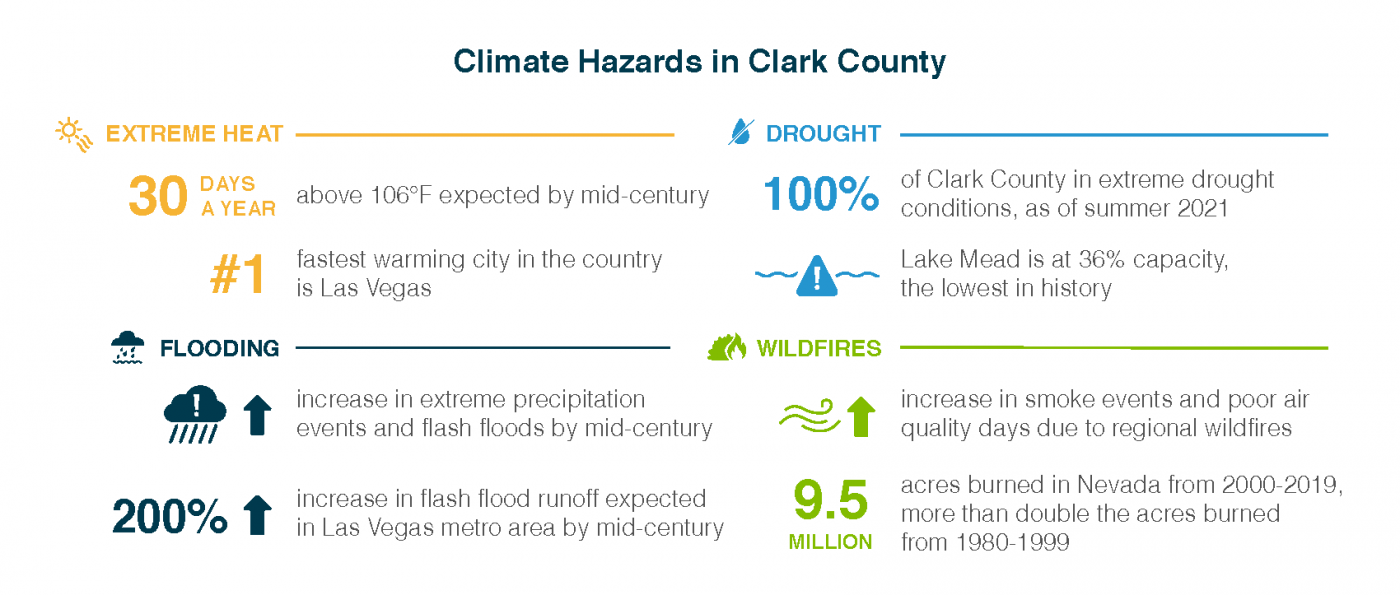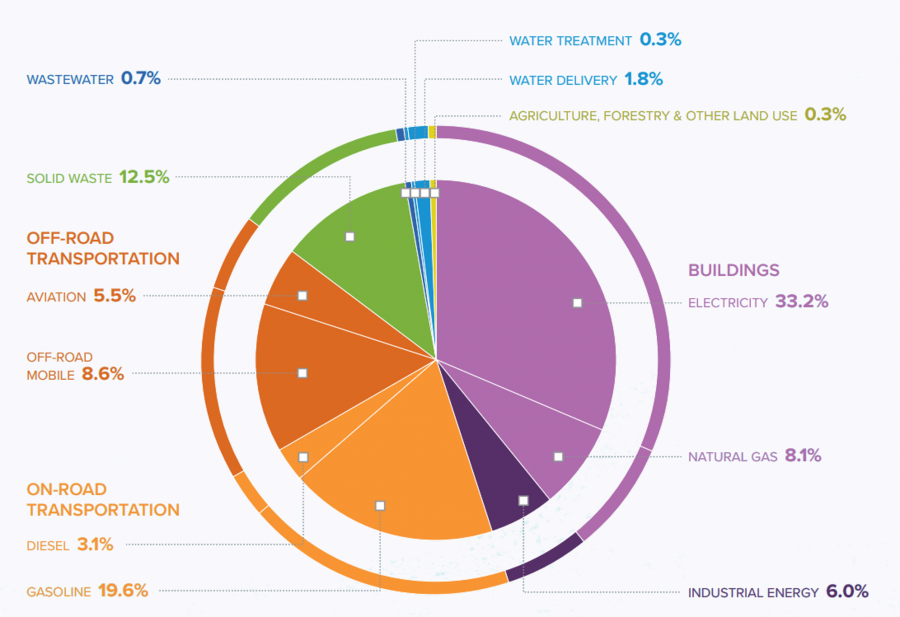Why We're All-In?
Jump to a spot on our page!Why We're All-In on Climate Action
As Southern Nevada fights to rebuild its economy after COVID-19 and anticipates adding another 820,000 residents by 2060, it does so in the midst of unprecedented threats from climate change, like extreme heat and drought. With climate threats come additional impacts that undermine social welfare and equity, disproportionately impacting those in our community who are least able to prepare for or recover from them.
What is Climate Change?
Greenhouse gases (GHGs) create a thick “blanket” in the atmosphere, trapping heat from the sun. This natural process is intensified when humans burn fossil fuels (like natural gas, coal, and gasoline) to power our homes, businesses, and vehicles. When there are too many GHGs, it can lead to disruptions in the Earth’s climate, resulting in changing temperatures and precipitation.
What Are the Stakes?
Increasing greenhouse gas emissions create two main changes in climate conditions in Clark County: higher temperatures and more extreme precipitation. These changes lead to climate hazards like extreme heat, drought, flooding, and wildfires. This infographic outlines the effects of changing temperature and rainfall patterns.
Read The Climate Summary
Understanding Climate Change in Clark County
Changing climate conditions are already creating hazards that have direct impacts on health, natural resources, infrastructure, and our economy. These climate impacts in turn threaten our communities' cultures and traditions, natural world, economy, and way of life. That's why Clark County is taking bold action now.

Understanding our contribution to climate change and where we will see the greatest impacts provides the groundwork for climate action planning. The best available climate science has been applied to the on-the-ground conditions in Clark County to produce two studies that guide the development of the All-In Community Plan.
- Regional greenhouse gas inventory: Analyzing data associated with activities that create emissions, such as driving to work or powering our homes, enables us to identify where our emissions are coming from.
- Climate vulnerability assessment: Identifying systems, people, and services, such as water resources or hospitals, that are at risk from climate change, as well as opportunities \ to enhance their resilience.
GHG Inventory: What is Causing Climate Change in Clark County?

Across all sectors, the Southern Nevada region is responsible for 30 million metric tons of CO2 equivalent (2019). This is approximately the same amount of emissions as burning a train-load of coal stretching from Las Vegas to Cleveland!
Our greenhouse gas emissions come from a variety of sources and we've broken them down to better understand how activities across the communities within Clark County contribute to our region's carbon footprint. Our biggest opportunities to reduce emissions are by using less energy in our homes and businesses, which contribute 47% of total emissions, and in our transportation which accounts for 37% of total emissions. Download the inventory report to learn more about what drives greenhouse gas emissions in Clark County.